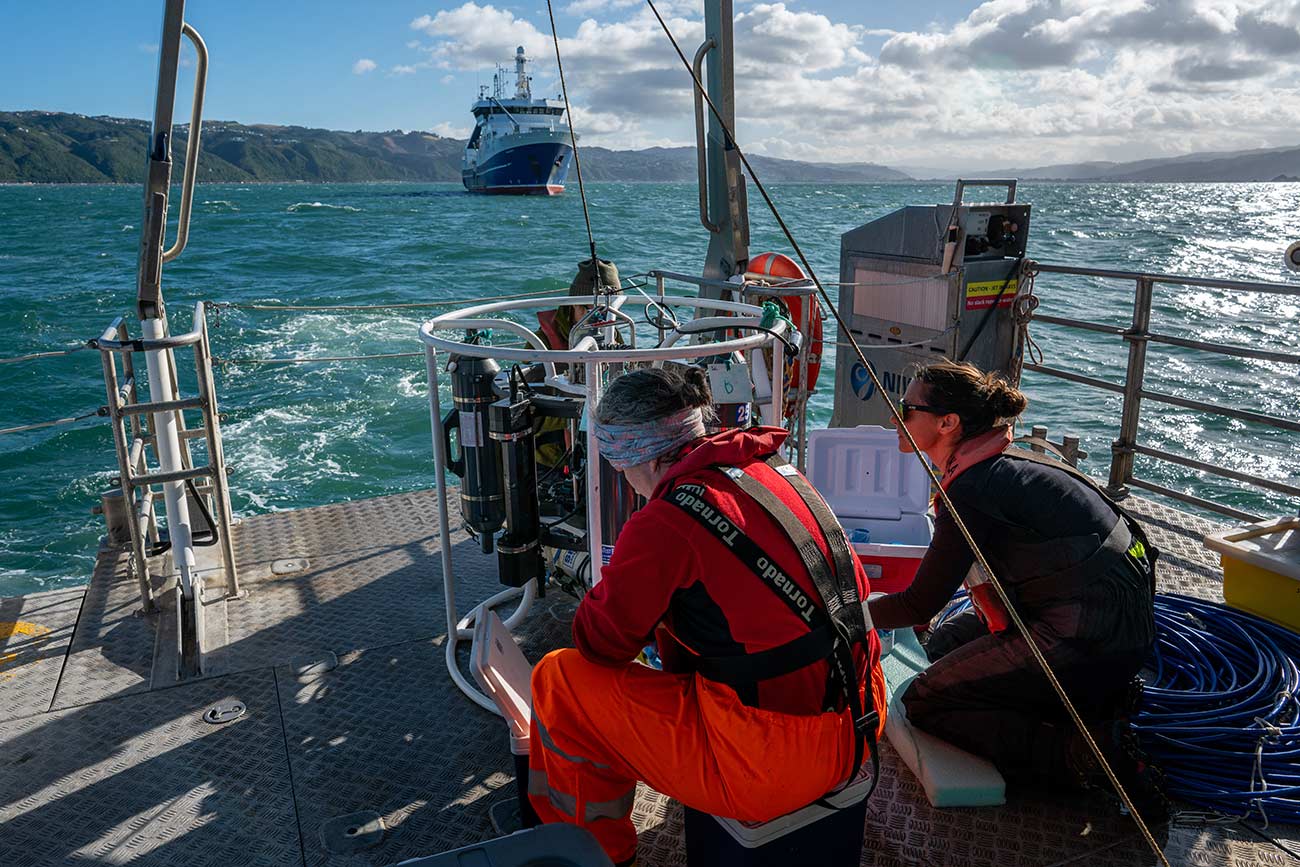Ship anchoring research a welcome addition to Te Whare Tūroa
The Te Whare Tūroa team are excited to welcome to the network a new project, which is investigating the effects of ship anchoring in Aotearoa New Zealand.
‘Redesigning anchoring practices for a more sustainable shipping industry’ is funded by the Ministry of Business, Innovation and Employment and was conceived in response to the ‘ports congestion pandemic’ that occurred during the COVID-19 response.
The research team is aiming to map the complete footprint of ship anchoring by measuring physical, chemical, biological, and ecological changes in case study anchorage sites around Aotearoa New Zealand.
So far, this problem has been out of sight and out of mind. But Project Co-lead and Te Whare Tūroa steering committee member Dr Marta Ribó points out that we need new solutions to reduce seafloor destruction caused by ships anchoring.
“The impact of regular anchoring worldwide likely represents a major driver of shallow marine habitat degradation,” she says. “This brings up questions about how anchor sites are chosen. Do we know what kind of habitat anchors are being dropped onto or is it done without regard to what’s below the surface?”

Diving in
Fieldwork has already begun to measure in real-time the impacts on the marine environment during an anchoring event.
The research team started with test sites in Te Whanganui-a-Tara / Wellington Harbour in early 2025, where a wide range of variables (e.g. increase of turbidity, seafloor sediment type, presence of organisms living in the seabed) were documented before, during and after anchoring. Those same variables were then measured in non-anchoring sites with undisturbed seabed to identify differences and therefore anchoring effects.
The study area (including the control site) was surveyed using multibeam sonar for mapping the seafloor, geological samples, and vertical profiles of the water column.
Before the fieldwork began, the team installed two instrumented moorings with sensors measuring ambient turbidity, carbon dioxide, oxygen, currents and environmental noise, to measure any changes before, during and after the anchoring event.
Immediate anchoring impacts (e.g., increased turbidity in the water) were measured during anchor operations via drone and sensor array deployed from the bow of the anchoring vessel. The bow sensors collected data throughout anchoring duration, targeting seabed disturbance related to vessel swing. Researchers also took vertical turbidity and water chemical profiles from a smaller vessel targeting resuspended sediment due to anchor emplacement and recovery.
Why it matters
By seeking to better understand anchoring effects, the data collected will help inform the spatial extent and severity of anchoring impacts. This includes both immediate effects such as sediment resuspension and enhanced marine noise, and longer-term effects such as changes on seabed structure and composition. These data can then be used in seafloor disturbance models to help us best understand how to mitigate against negative effects from anchoring.
Dr Ribo says “We will map the distribution of key vulnerabilities within each case study region and communicate with partners and national port and harbour authorities to increase awareness. We will then work across the board with industry, mana whenua, and councils, utilising global expertise to co-develop an environmental framework for current and future anchorage zones.”
Dr Ribó’s fellow co-lead Dr Sally Watson (Earth Sciences New Zealand) says “Anchoring could be responsible for as much as 20,000km2 of damaged seabed worldwide.”
Such numbers are comparable to the seabed damage of trawling because even though trawling occurs over a greater area, anchoring is done much more frequently, for longer, and penetrates more deeply.
“The anchor digs into the seabed and is moved around as the ship drifts on the surface,” Dr Watson explains, “it drags the chain and causes broomstick-like abrasions, killing off marine species and releasing carbon stores from the sediment. This has far-reaching implications for already stressed ecosystems and carbon cycling.”